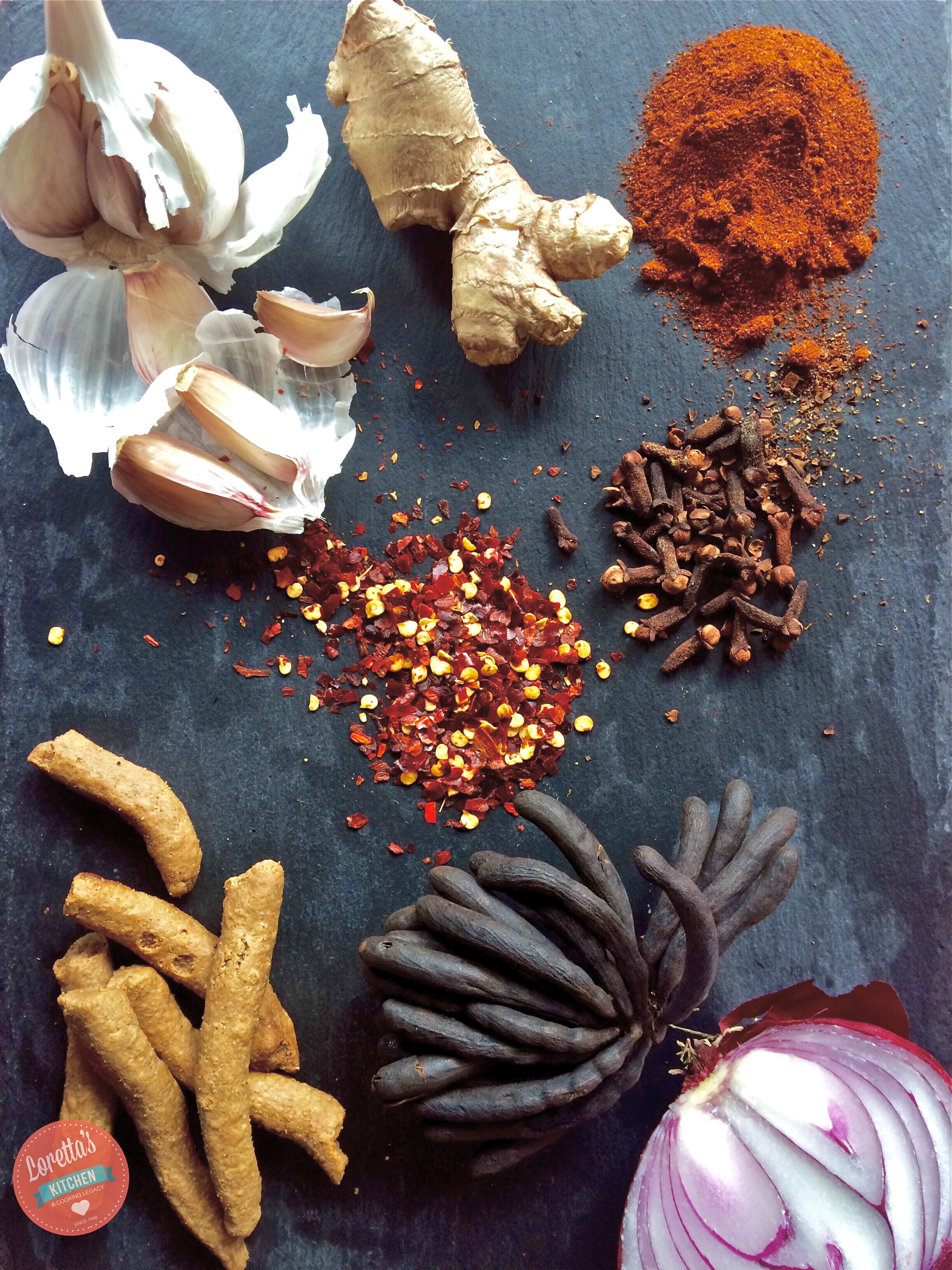I didn’t appreciate the nostalgic memories the ingredients which make up Suya Spice conjured up for Nigerian’s living in diaspora, that is until this weekend at the door step of my home.
Suya (sooya) is West Africa’s shish kebab with a dry rub of nuts and spices. It is believed that Suya originated with the Hausa people (located in Northern Nigeria), nevertheless it’s popularity has spread and is now a visible part of Nigeria’s large towns and cities thanks to the many street vendors who work the grills till way into the night.
Suya is usually made with lean cuts of beef, however now that the spice has come into its own, it has been used to liven up roast potatoes and marinade chicken or fish for example.
So let’s breakdown some of the unique ingredients:
Kuli Kuli (peanut stick)
The peanut flavour of Suya comes in the form of a fried ground peanut paste known popularly as ‘Kuli Kuli’ (see picture). When crushed, the kuli kuli or peanut sticks turns into a smooth powder or peanut flour. In essence, kuli kuli is a peanut powder obtained through the extraction of oil from crushed peanuts. The nut powder is made into round peanut balls and then fried. Once cooled the nut balls are once again crushed to make the suya spice. If you are lucky enough, you will be able to get your hands on some kuli kuli from your local African market (mine were purchased in Ridley Market, Hackney).
If you can’t get your hands on any then crush some roasted salted peanuts in a mortar and pestle or spice grinder. A word of caution - you are NOT making peanut butter! I’m being very serious - try not to over process it into a peanut paste. If this happens, simply place the nuts into a tea towel and then press by placing a heavy chopping board or cast iron pot on top to ease the oil out. If that attempt fails, then be satisfied with Suya paste rather than powder which works just as well if you are using other fresh ingredients (such as onion, ginger and garlic). The trouble is it won’t last as long as the powder.
Negro Black Pepper (Udo) aka ‘SpiderLegs’
What do you call this spice in your language? I’m told it’s known as Uda in Igbo, Eeru in Yoruba and Chimba in Hausa. I prefer the nostalgic name ‘Spiderleg’ as used by my friend Alicia (who owns the Ghanaian Street Food Stall Chalé! (she serves very tasty Ghanian cuisine cooked by her very own hands every Sunday, Chatsworth Market, Hackney).
Now to get my hands on some ‘Spiderlegs’. In London. Right now. I had set myself up for the challenge, there were to be no substitutions, I mean after hearing so much about it, what could really replace the unique woody smell and peppery taste of the Uda pod? It put the ‘spice’ in Suya?! So I was told. I had to find out. It HAD to be somewhere in London with such a large Nigerian community, somebody’s Auntie had it. So I sent out a message on twitter, sounding like a right old novice:
“Can anyone help? I’m looking for these two ingredients: Kuli Kuli and Uda/ Negro Black Pepper”
Literally without exaggeration within 30 minutes, I was contacted by AfroExpress (a London based company that makes home deliveries of African groceries) with pictures of the said items they had sourced. Before 4pm the same day they were at my door with the ingredients! I couldn’t believe it! I burst the packet of ‘spiderlegs’ open (ok that sounds gross but stick with me) and the smell hit me: smoky, woody, dark, peppery pods. Then I opened the bottle of Kuli Kuli: intense nutty aroma. At last! The final pieces of the puzzle were now in place, it was time to assemble the spice blend:
INGREDIENTS 5 tbsp crushed Kuli Kuli (or crushed roasted peanuts) *If making a paste, substitute the powder for the fresh ingredients, using the same measurements METHOD: 1. Start by crushing the Kuli Kuli in the spice grinder. Once you have a coarse powder, add the remaining ingredients, one by one. It might help to slice open the uda pods to help the breaking down process. If making a paste, follow the same process, in which case a food processor would be more appropriate. 2. The powder can be stored in a airtight container for up to 3 weeks, the Suya paste, no more than 2 days I would say. Check back later where I will be sharing my version of Suya Popcorn Chicken!
5 tbsp ginger powder*
2 tbsp cayenne pepper flakes
10 strands of African Negro Pepper or Uda
2 tbsp garlic powder*
1 tbsp Smokey Paprika powder
2 tbsp onion powder*
1 small stock cube
1 tsp whole cloves
1 tsp salt

